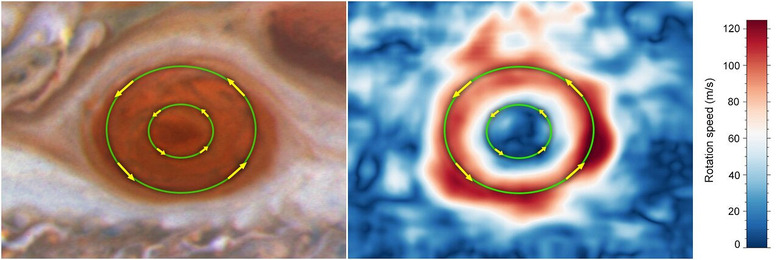Wind Speeds In Jupiter's Iconic Red Spot Are Getting Faster
One of the most iconic features of Jupiter is its iconic Great Red Spot. That feature is a massive storm that's been going on for centuries. Observations made using the Hubble Space Telescope have determined that wind speeds inside that massive storm have increased.
Observations have confirmed that wind speed has increased by as much as eight percent between 2009 and 2020 in the storm's high-speed ring. Wind speeds in the innermost region of the storm are significantly slower than in the outer region. Astronomers know that the Great Red Spot spins counterclockwise with wind speeds of over 640 kilometers per hour.
While the Great Red Spot looks small considering how massive Jupiter is, the storm is larger than Earth. Humans have been observing the storm for 150 years. Wind speeds measured by Hubble show a decrease of less than 2.5 kilometers per hour per Earth year. Scientists say the change is so small that it would have been missed it wasn't for more than a decade of data from Hubble.
With the power and resolution of Hubble, scientists can observe components of the storm down to 170 kilometers across. Scientists use software to track thousands and thousands of wind vectors for each observation of Jupiter. Project researchers admit that what the increased windspeed means is uncertain.

Scientists are keen to learn what powers the storm and why it has lasted so long. We do know the Great Red Spot is an upwelling of material from the interior of the planet. Scientists believe it has a structure like a tiered wedding cake with high clouds in the center flowing down the outer layers. Interestingly, the storm is shrinking in size, becoming more circular, as noted by over a century of observations.
